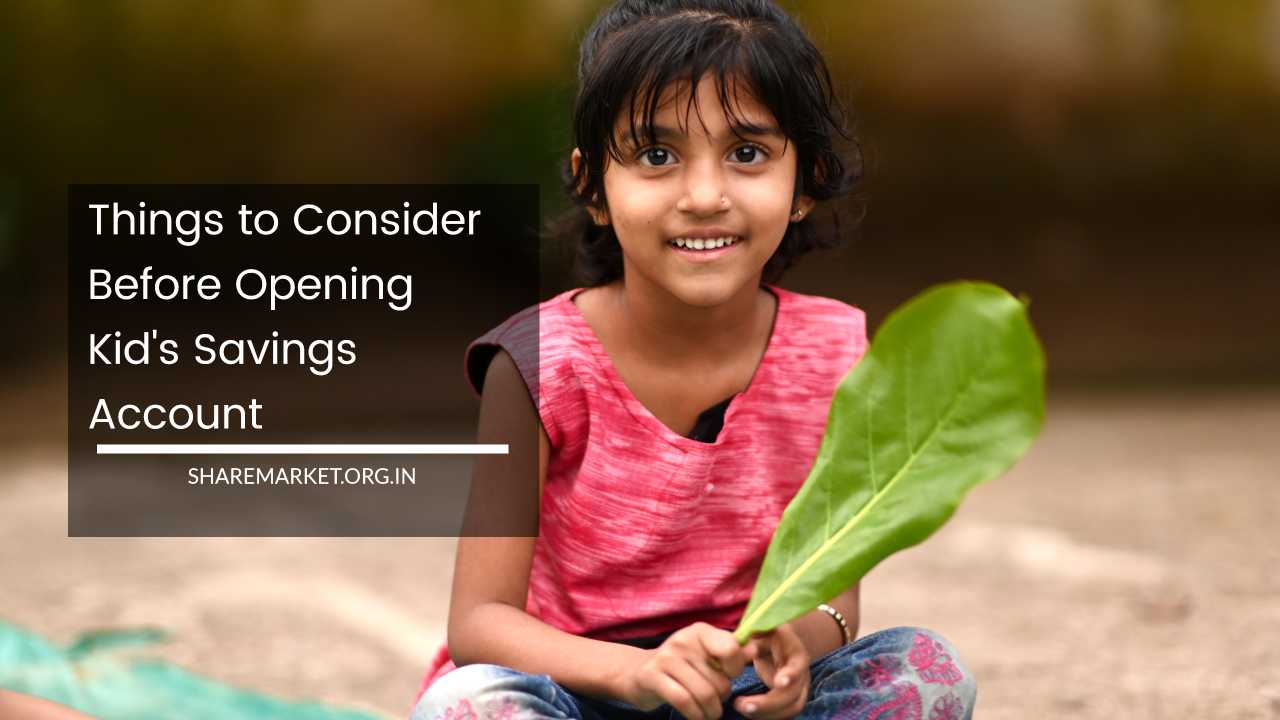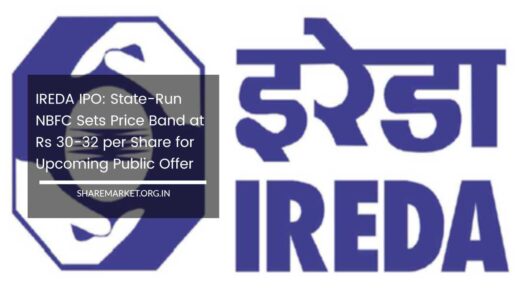Things to Consider Before Opening Kid’s Savings Account

Kid’s Savings Account
Things to Consider Before Opening a Kid’s Savings Account in India
Opening a savings account for your child is a significant financial decision that can have long-lasting benefits. It not only helps instill the habit of saving from an early age but also provides a solid foundation for their future financial needs.
This guide will walk you through the various types of children’s savings accounts available in India, and the essential factors to consider before choosing the right one.
By understanding these aspects, you can make an informed decision that aligns with your family’s financial goals and needs.
Understanding Different Types of Children’s Savings Accounts
In India, there are several types of savings accounts designed specifically for children. Each type has its unique features and benefits. Here’s a detailed look at the various options:
1. Minor’s Account
A Minor’s Account is a basic savings account opened in the name of a minor child, with a legal guardian managing it until the child reaches the age of majority (typically 18 years).
- Management by Legal Guardian: A Minor’s Account requires a parent or guardian to operate the account on behalf of the child. The guardian manages all transactions until the child reaches adulthood.
- Bank Availability: These accounts are available at almost all banks in India, offering a wide range of options for parents to choose from.
- Basic Features: Standard features include the ability to deposit and withdraw funds, and in some cases, a chequebook. However, chequebooks are less common for minor accounts.
2. Child-Specific Savings Accounts
Many banks offer specialized savings accounts tailored to the needs and interests of children. These accounts often come with various age-specific benefits and features.
- Age-Appropriate Benefits: Child-specific accounts are designed to cater to different age groups, providing benefits such as higher interest rates for younger children or additional features for older ones.
- Additional Features: Banks may offer gift schemes, rewards for academic achievements, and other incentives to encourage saving and financial responsibility.
- Educational Benefits: Some accounts come with benefits that can be used for educational expenses, making them ideal for parents planning for their child’s future education.
3. Recurring Deposit (RD) Accounts
A Recurring Deposit (RD) Account is a type of fixed deposit that requires monthly contributions. It is an excellent option for disciplined saving.
- Encourages Regular Savings: RD accounts are structured to require fixed monthly deposits, encouraging a disciplined saving habit.
- Higher Interest Rates: Compared to regular savings accounts, RD accounts typically offer higher interest rates, providing better returns on savings.
- Long-Term Planning: Ideal for parents who want to set aside a fixed amount regularly to build a substantial corpus for future needs such as higher education or other significant expenses.
4. Sukanya Samriddhi Account (SSA)
The Sukanya Samriddhi Account (SSA) is a government-backed savings scheme specifically for the girl child. It is designed to support her education and marriage expenses.
- Government-Backed: This account is part of the Beti Bachao Beti Padhao scheme and offers government-backed security.
- Tax Benefits: Contributions to the SSA are eligible for tax deductions under Section 80C of the Income Tax Act, and the interest earned is tax-free.
- Attractive Interest Rates: The SSA provides competitive interest rates, which are generally higher than those offered by regular savings accounts and many fixed deposits.
- Long-Term Investment: The SSA is intended for long-term savings and has specific rules regarding the minimum and maximum deposit periods, making it suitable for long-term financial planning.
Factors to Consider When Choosing a Kid’s Savings Account
Selecting the right savings account for your child involves considering various factors. Here’s a detailed guide to help you make an informed choice:
Age of Your Child
The age of your child plays a crucial role in determining the most appropriate type of savings account.
- Infants and Toddlers: For very young children, a Minor’s Account is typically suitable. This account allows you to start saving on their behalf and provides basic banking features.
- Growing Children: As your child grows older, accounts with age-specific benefits or educational perks may be more appropriate. Child-specific savings accounts often include features tailored to the needs of children in different age brackets.
Financial Goals
Identifying your financial goals will help you choose an account that aligns with your objectives.
- Purpose of the Account: Determine what you plan to use the savings for, such as education, marriage, or general financial security. This will guide your choice of account type.
- Long-Term Goals: For long-term financial goals, like saving for college or marriage, consider accounts like the Sukanya Samriddhi Account or Recurring Deposit accounts, which offer better returns and are designed for longer investment periods.
Interest Rates
Interest rates are a critical factor in maximizing the returns on your savings.
- Comparative Analysis: Compare the interest rates offered by different banks for various types of accounts. Higher interest rates can significantly increase the growth of your savings over time.
- Additional Factors: While interest rates are important, consider other factors such as account features, benefits, and service quality. Some banks offer special interest rates for certain deposit amounts or conditions.
Account Features and Benefits
The features and benefits of an account can add significant value beyond just earning interest.
- Additional Perks: Look for accounts that offer extra benefits like gift schemes, insurance coverage, or educational rewards. These perks can enhance the overall value of the account.
- Convenience: Consider the ease of managing the account, including online banking facilities, mobile app usability, and customer service quality.
Tax Implications
Understanding the tax implications of different accounts can help you make the most of available tax benefits.
- Tax Benefits: Accounts like the Sukanya Samriddhi Account offer tax benefits under Section 80C of the Income Tax Act. The interest earned is also tax-free.
- Consult a Tax Advisor: For personalized tax advice, consult a tax advisor to understand how different accounts will impact your tax situation and how to optimize benefits.
Minimum Balance Requirements
Different accounts have varying minimum balance requirements, which can affect your choice.
- Bank Policies: Review the minimum balance requirements for each account type and bank. Some accounts may have higher requirements, which could be a deciding factor.
- Affordability: Choose an account with a minimum balance requirement that aligns with your saving capacity and financial comfort level.
Bank Reputation and Accessibility
The reputation and accessibility of the bank can influence your overall satisfaction with the account.
- Reputable Institutions: Opt for banks with a strong reputation and good customer service. A reputable bank is more likely to offer reliable services and support.
- Branch and ATM Network: Ensure the bank has a robust branch and ATM network, making it convenient for deposits, withdrawals, and other transactions.
Lock-in Period
Some accounts come with lock-in periods, which can affect your access to funds.
- Understanding Lock-in Terms: Be aware of any lock-in periods associated with the account. Lock-in periods restrict access to funds for a specified duration.
- Liquidity Needs: Consider your family’s liquidity needs before choosing accounts with lock-in periods. Accounts with flexible withdrawal options may be more suitable if you anticipate needing access to funds.
Account Opening Process
The process for opening an account can vary by bank and account type.
- Documentation Required: Understand the documentation required to open the account. Common documents include proof of identity, address, and the child’s birth certificate.
- Convenience of Process: Some banks offer doorstep services or online account opening options, which can simplify the process and save time.
Inculcating Financial Literacy
A savings account can be a valuable tool for teaching your child about money management and financial literacy.
Early Education
- Learning About Money: Use the account as an opportunity to teach your child basic financial concepts such as saving, budgeting, and the importance of money management.
- Engagement: Involve your child in monitoring the account and setting saving goals, which can help them understand the value of money and the benefits of saving.
Financial Literacy Programs
- Bank-Provided Programs: Some banks offer financial literacy programs designed specifically for children. These programs can provide additional educational resources and activities to enhance your child’s understanding of finance.
- Additional Resources: Look for external resources such as books, online courses, and educational games that focus on financial literacy for children.
Tips for Effective Savings
Effective saving requires planning, discipline, and regular review. Here are some tips to help you and your child make the most of the savings account:
Start Early
- Compound Interest: Starting to save early allows your money to grow over time due to the power of compound interest. The earlier you begin, the more your savings can accumulate.
- Early Habit Formation: Establishing a saving habit early in your child’s life sets a strong foundation for their future financial behavior.
Set Realistic Goals
- Define Objectives: Clearly define your savings goals and the amount you need to save. This helps in setting achievable targets and tracking progress.
- Regular Reviews: Regularly review your savings goals and adjust them as needed based on changes in financial circumstances or objectives.
Automate Savings
- Automatic Transfers: Set up automatic transfers from your salary account to your child’s savings account. Automation ensures consistent saving and reduces the risk of forgetting to make contributions.
- Scheduled Deposits: Many banks allow you to set up scheduled deposits, making it easier to manage regular contributions.
Review Regularly
- Track Progress: Regularly review your child’s savings account to track its progress and ensure it aligns with your financial goals.
- Adjust Strategies: Based on your review, adjust your saving strategies or consider switching accounts if necessary to maximize benefits.
Teach Financial Literacy
- Open Discussions: Regularly discuss financial topics with your child to enhance their understanding of saving, investing, and managing money.
- Practical Lessons: Provide practical lessons, such as budgeting for small expenses or saving for a desired item, to reinforce financial concepts.
Consider Additional Investments
- Diversification: Explore other investment options, such as mutual funds, stocks, or bonds, to diversify your child’s investment portfolio and potentially achieve higher returns.
- Investment Vehicles: Research and consider various investment vehicles that align with your child’s long-term financial goals and risk tolerance.
Final Remarks
Opening a kid’s savings account is a valuable decision that can significantly impact your child’s financial future. By considering the factors outlined in this guide—such as the type of account, interest rates, features, and tax implications—you can select the best option for your family’s needs.
Remember, the key to successful saving is to start early, set realistic goals, automate contributions, and educate your child about financial management.
With careful planning and consistent effort, you can build a strong financial foundation for your child’s future and help them develop important money management skills.

















